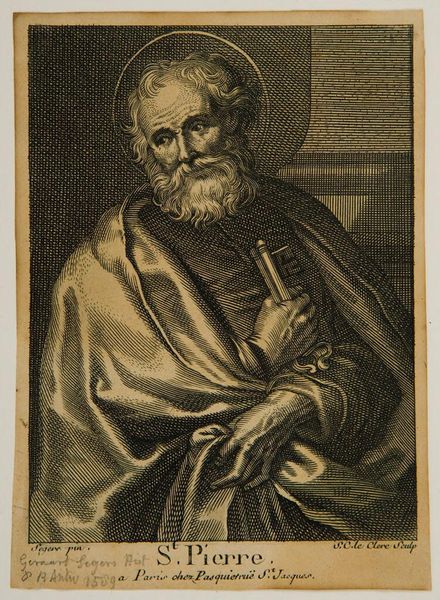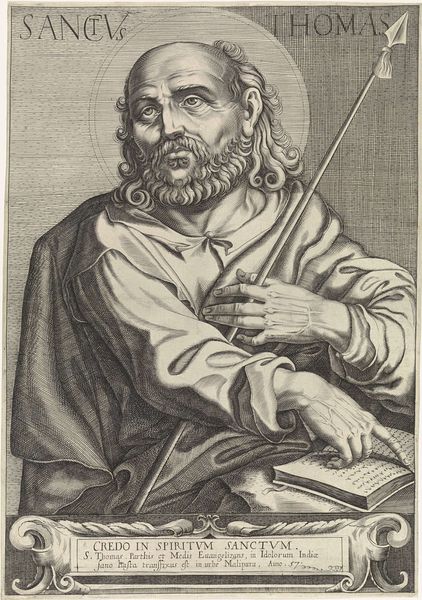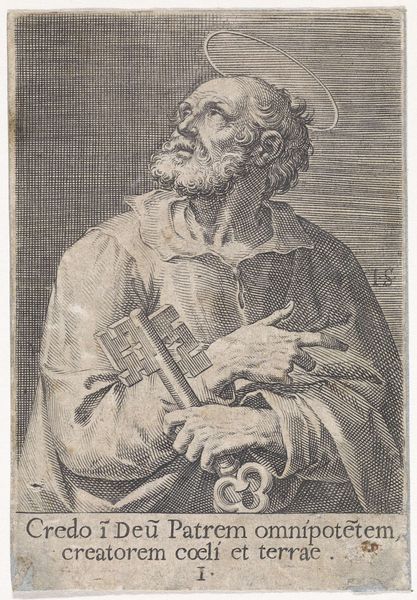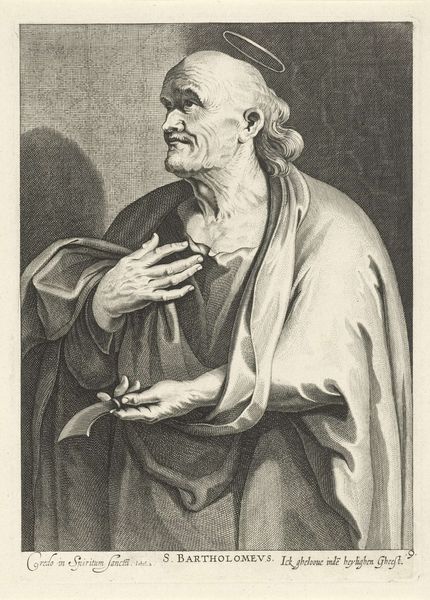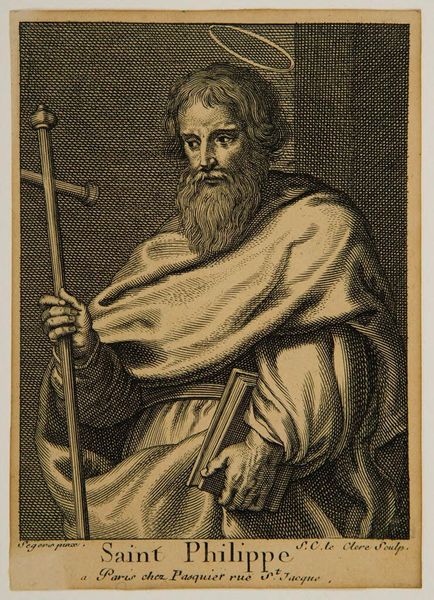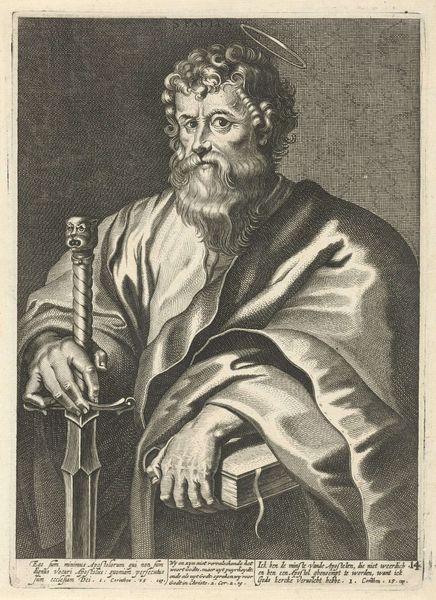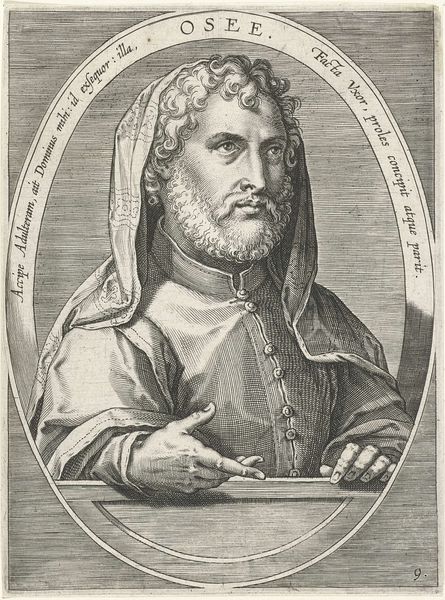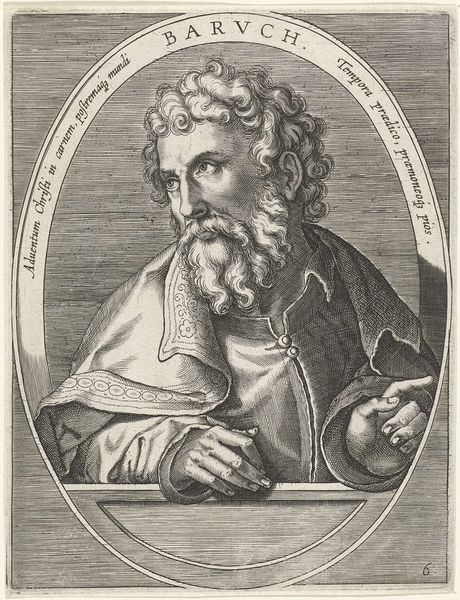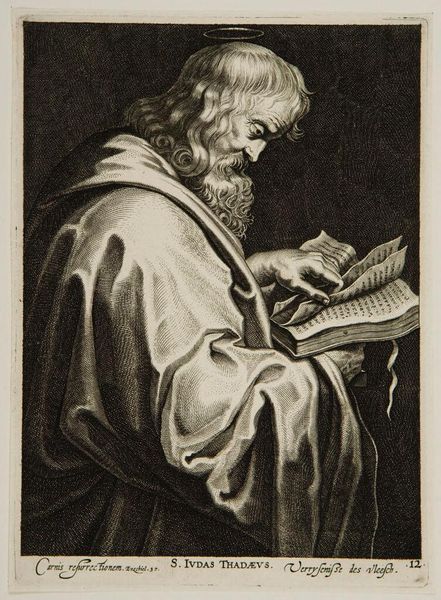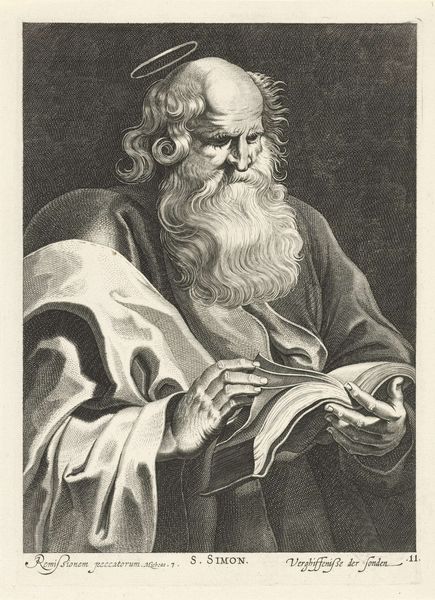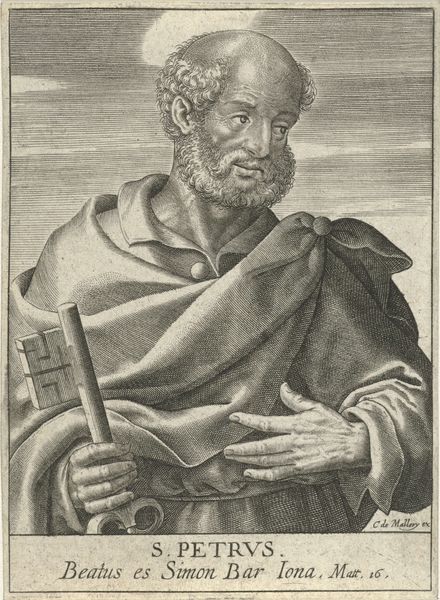
print, engraving
#
portrait
#
pencil drawn
#
medieval
# print
#
figuration
#
cross
#
pencil drawing
#
line
#
portrait drawing
#
history-painting
#
academic-art
#
engraving
Dimensions: height 95 mm, width 67 mm
Copyright: Rijks Museum: Open Domain
Curator: Before us, we have the print "Apostel Filippus," crafted sometime between 1570 and 1600 by Johann Sadeler I. It currently resides here at the Rijksmuseum. Editor: It has such an arresting quality, almost somber. The figure dominates the frame, with that stark cross. There’s such a sense of stillness in the lines themselves. Curator: Sadeler was deeply embedded in the artistic circles of his time. Prints like this were widely circulated, fulfilling a demand for religious imagery and contributing to the visual culture that reinforced theological narratives during the Reformation and Counter-Reformation. Editor: You can certainly see that devotional aspect in the direct gaze. The engraving—look at the detail in the folds of the robe. And then there's that contrasting plain background. It makes the subject really stand out, almost imposing, which reinforces the work's purpose in conveying faith and power. Curator: It is interesting how Sadeler’s representation of Philip, marked with a halo, aligns with the idealised depictions that were favoured by religious institutions during that period. Think about the patronage system and the commission of art for specific purposes; there’s this powerful interplay between the artist’s vision and the desires of his patrons. Editor: Yet, it’s not all purely symbolic. The cross, for example. The texture that's been created to represent the wood through only a line technique! The details enhance both the visual interest and the deeper symbolic meaning related to martyrdom and devotion. Curator: Exactly! This print is as much about artistic skill as it is about the socio-religious messaging of the time. By examining who produced and disseminated it, where it was displayed, and who consumed it, we gain insights into its intended influence. Editor: For me, breaking down its parts -- line, composition, balance – those let us see the emotional message being built into the artwork. That blend of the literal with the symbolic creates the portrait's captivating visual rhetoric. Curator: It’s remarkable to consider that something created centuries ago continues to spark dialogues about belief, power, and the ways we visually construct and perceive history. Editor: Yes, even now, after centuries, these carefully wrought lines remind us of the enduring power of visual art to evoke contemplation and emotion.
Comments
No comments
Be the first to comment and join the conversation on the ultimate creative platform.
